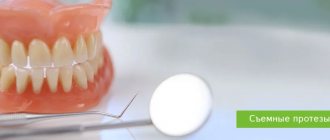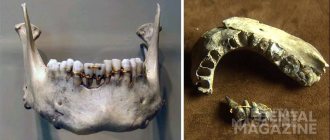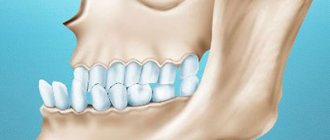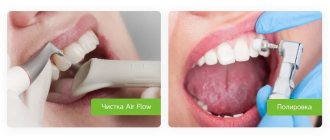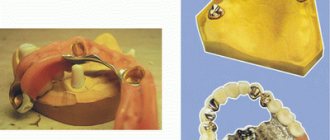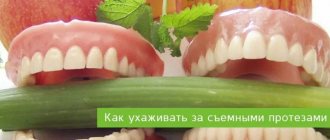When using dental prosthetics, it is important to achieve not only an aesthetic result, but also to maintain the health of the temporomandibular joints, ensure the durability of dentures and maintain overall health. Improperly made dentures can cause not only discomfort in the mouth, but also chronic headaches, neck pain, and TMJ dysfunction. There may also be chipping of dentures due to an improperly designed bite. When planning dental prosthetics, the doctor must focus on the natural healthy dentofacial apparatus and design dentures in such a way as to restore the normal functioning of the dentofacial system without compromising the health of the entire body.
Natural dental prosthetics
Nature has designed the dentition as an integral system, taking into account the simultaneous closure of opposing teeth and the interaction of adjacent teeth in the row. When chewing, the natural jaw has a uniform and simultaneous point closure of the lateral teeth, associated with full or partial light contact of the front teeth. The closure of the lateral teeth occurs according to a typical pattern, but individual deviations are possible. With a normal physiological occlusion, the chewing surfaces of the lateral and anterior teeth do not wear out. The lower jaw in a calm state balances freely on the axis of the temporomandibular joint. These principles are taken as a basis in the manufacture of denture structures, especially in the design of complete dentures.
To translate these principles into actual dentures, the doctor takes impressions in various positions. The patient may be asked to make different movements of the jaw to determine the places of muscle attachment, the location of soft tissues, so that the dental technician takes all this into account when making a model of the jaw and developing a custom tray - the basis of the prosthesis. The models are adjusted to the required parameters in the articulator, a facial bow is formed, and artificial teeth are selected according to size and shape. The anterior teeth are arranged in accordance with aesthetic, phonetic and functional requirements, as well as taking into account the individual characteristics of the patient.
When developing a denture, the following parameters are taken into account:
- the edges of the incisors and the occlusal plane should be parallel to the line passing through the pupils;
- the direction of the axes of natural teeth is observed when placing them - some teeth have a slight inclination in one direction or another; to make the denture more natural, the cutting edges of the front teeth may have slightly different inclination angles;
- when selecting the height of the front teeth, aesthetic criteria are taken into account, as well as phonetic ones - when trying on a working model with wax rollers instead of teeth, the doctor makes sure that the edges of the upper incisors touch the top of the lower lip when pronouncing the sound “f”, and when pronouncing the sound “s” there should be a gap left 1-2 mm in the premolar area;
- the shape of the dental arch should provide a slight convexity of the upper lip in the area of the central teeth and canines;
- when smiling, dark triangles should remain in the lateral sections - the buccal corridor (between the teeth and the corners of the lips);
- the central axis of the teeth must coincide with the cosmetic center;
- The shape of the front teeth is selected depending on the type of face.
When planning dental prosthetics, it is important to determine the correct position of the lower jaw relative to the skull. The correct position can be disrupted for many reasons: wear and loss of teeth, multiple fillings, malocclusion, stress and associated muscle tension, bruxism (teeth grinding), clench (clenching teeth from the English clench - squeeze, squeeze).
A displaced lower jaw due to the absence of distant teeth has a negative impact on health, causing sleep apnea, snoring, hormonal imbalance due to compression of the thyroid gland and chronic hypoxia.
Gum plastic surgery
This is a surgical intervention in which the doctor forms a beautiful gingival margin. Gingivoplasty improves the volume and contour of the gums. Like any operation, gum surgery is accompanied by slight swelling and some pain. Immediately after the intervention, you need to follow the doctor’s recommendations, limit certain foods, and carry out procedures.
During implantation, they work with the gum after the implant has healed, but before installing the crown. In order to form a hole, a gum former is first used, and after 2 weeks a crown is installed.
All together, and even the terrible word “operation”, often scares patients away. Sometimes, plastic surgery cannot be performed due to contraindications. Therefore, another method was proposed.
Neuromuscular occlusion
The position of the lower jaw in space affects posture and the condition of the skull bones. Any misalignment of the lower jaw, caused by multiple missing teeth or an incorrectly designed bite during the fabrication of complete dentures, causes the cervical vertebrae to become misaligned as they attempt to balance the situation. The entire spine shifts according to these changes to achieve balance, which disrupts normal posture. On the other hand, tensions from incorrectly and asymmetrically working masticatory muscles are transmitted through the teeth to the bones of the skull, and as a result, neurological reactions can occur, expressed as chronic headaches, especially in the temples and in the suboccipital region, dizziness, clicking in the temporomandibular joints, neck pain, blurred vision and hearing, numbness in the fingertips.
When determining the position of the lower jaw, a state of neuromuscular bite is achieved, and not the usual one, for which the muscles are affected by electrical impulses. Electrical exposure time is about 45 minutes. The muscles relax and the jaw moves from its usual position to a physiological one. Then a graph of the movement of the lower jaw and muscle work is taken (computed myography).
The found correct position of the lower jaw is used in the design of dentures. Osteopathic correction helps compensate for muscle imbalance caused by the new unusual position of the lower jaw. Neuromuscular occlusion maintains the health of the entire body and ensures the longevity of dentures.
If we take into account the natural interaction of the anatomical parts and the tension of the neuromuscular fibers, as well as the natural position of the former dentition, the prosthesis will stay more securely in the mouth in the position of non-closing teeth and function better without causing inconvenience and unpleasant sensations.
Artificial gum on implants
During implantation, gum problems can be expressed in different ways:
1.
In the absence of teeth
for a long time, loss (atrophy) of bone tissue occurs.
- The gums “sag” and become lower than where the tooth root is preserved. The gingival margin is uneven and has a sloppy appearance.
- Atrophy leads to the fact that the gums in the place of the lost tooth “sink”, disrupting the uniformity of the contour.
The picture shows bone atrophy in the absence of teeth
2.
Periodontal diseases
(gingivitis, periodontitis, periodontal disease) negatively affect the condition of the oral mucosa. The gums also suffer, they become loose, often unattractive in appearance, their contours are constantly changing, sometimes swelling in one place, then in another.
3.
Recession (loss) of the gums
is caused not only by inflammatory processes or atrophy. Recession can be triggered by chronic injuries (cleaning with a hard brush, for example), bite pathologies, errors in prosthetics and orthodontic treatment.
In modern dentistry, 2 approaches
to solving this problem. The choice of method is made based on the specific clinical situation and individual characteristics of the patient.
Teeth color
The patient, doctor and dental technician take part in choosing the color of the teeth. This is how you can get the result that a patient expects when visiting a dentist for dental prosthetics. The Family Dental Clinic has its own dental laboratory, and dental technicians can take a direct part in discussing the type of future dentures, as well as use photographs of the patient from the Center’s database in the manufacture of denture structures.
How much does partial denture cost?
The cost of partial dental prosthetics depends on the type of prosthesis and the chosen treatment concept, on the number of teeth to be restored (especially with implantation), as well as on the level of the clinic and the qualifications of the doctor.
| Prosthesis | Price |
| Single prosthesis on an implant | From 35,000 - 40,000 turnkey for a budget implant system, more than 60,000 for an elite one |
| Bridge prosthesis on implants | From 90,000 rubles |
| Classic bridge | On average from 20,000 to 50,000 rubles. Depends on the number of teeth being replaced and the material of the prosthesis |
| Clasp prosthesis | With clasp fixation it will cost from 35,000 to 45,000 rubles, with locking – more than 60,000 rubles |
| Plate prosthesis | 15,000 - 20,000 rubles for simple acrylic structures. Acry Free, Quadrotti and Sandwich prostheses can cost up to 45,000 - 50,000 rubles |
Features of physiological prosthetics
To make the most comfortable dentures, you cannot follow standard solutions. Each patient is individual, therefore, at Dial-Dent, a dental prosthesis is formed taking into account all the characteristics of a particular patient. To do this, you may need to come to the fitting again or conduct a photo shoot, but all these actions are aimed at obtaining a high-quality result. A properly made denture can completely change your appearance, giving you confidence, youth, and beauty. The convenience of using high-quality complete dentures also adds positive emotions and allows you to enjoy life to the fullest.
Family Dental specialists carefully approach the problems of each patient, finding a solution to suit every taste, budget and requirement. Make an appointment with an orthopedic dentist at Dial-Dent and restore your lost teeth, bringing back all the colors of your life.
Survey
Diagnostics helps to accurately assess the condition of teeth, gums, and facial bones and determine the optimal method of treating edentulism. To do this, the dentist:
- Interviews the patient and listens to complaints.
- Examines all organs of the oral cavity - teeth, gums, tongue.
- Prescribes radiography or CT (computed tomography).
The images help determine whether the teeth adjacent to the defect are suitable for use as supports. Sometimes, after radiography, it also turns out that adjacent units are not suitable for adjacent implants or bridges.
Artificial gum method
With this method, a crown with an artificial gum is installed, which imitates the real one in color and shape. The gingival margin here is always clearly defined, the height of the teeth is anatomically correct, and the smile is attractive. The edge of the gums and papillae (small triangles between the teeth) are modeled from a special material, so the structure looks natural. Patient photographs clearly demonstrate the attractive aesthetics of such restoration.
Which method is better
There is no treatment that suits everyone, so the dentist decides which method to use based on the clinical picture and the data collected. Tissue augmentation may be impossible for a number of reasons, or artificial gum cannot be used for various reasons. Large clinics will consider both options because they have the basis for using either option. In small dentistry, the doctor may lack experience in tissue transplantation, or the technicians may not have the material to make artificial gum on the prosthesis.

